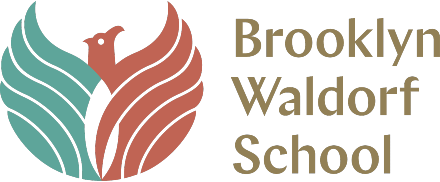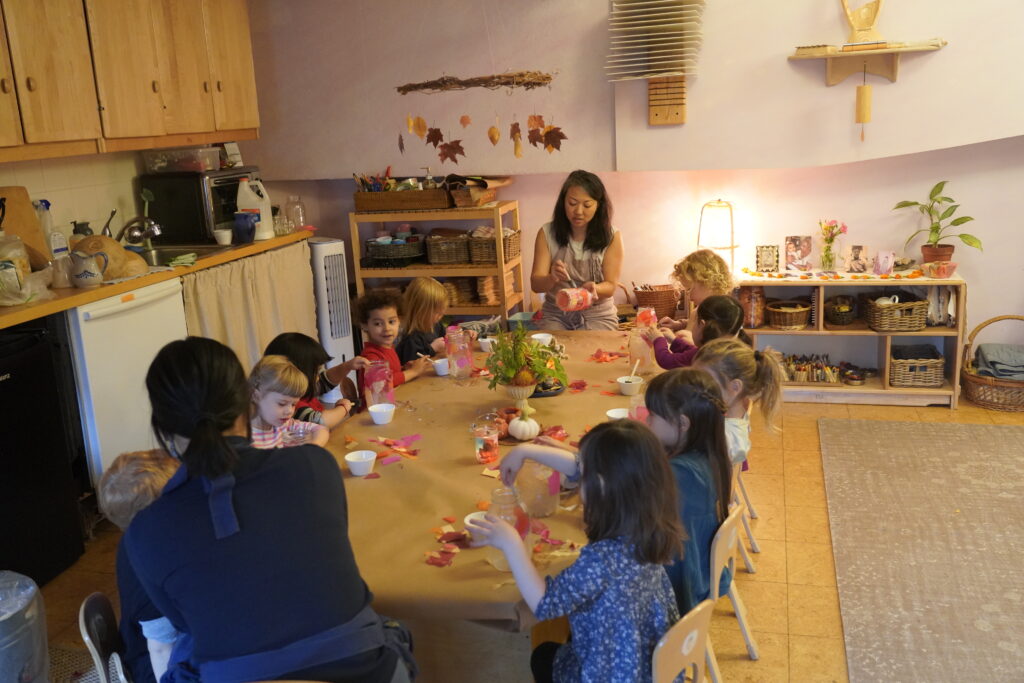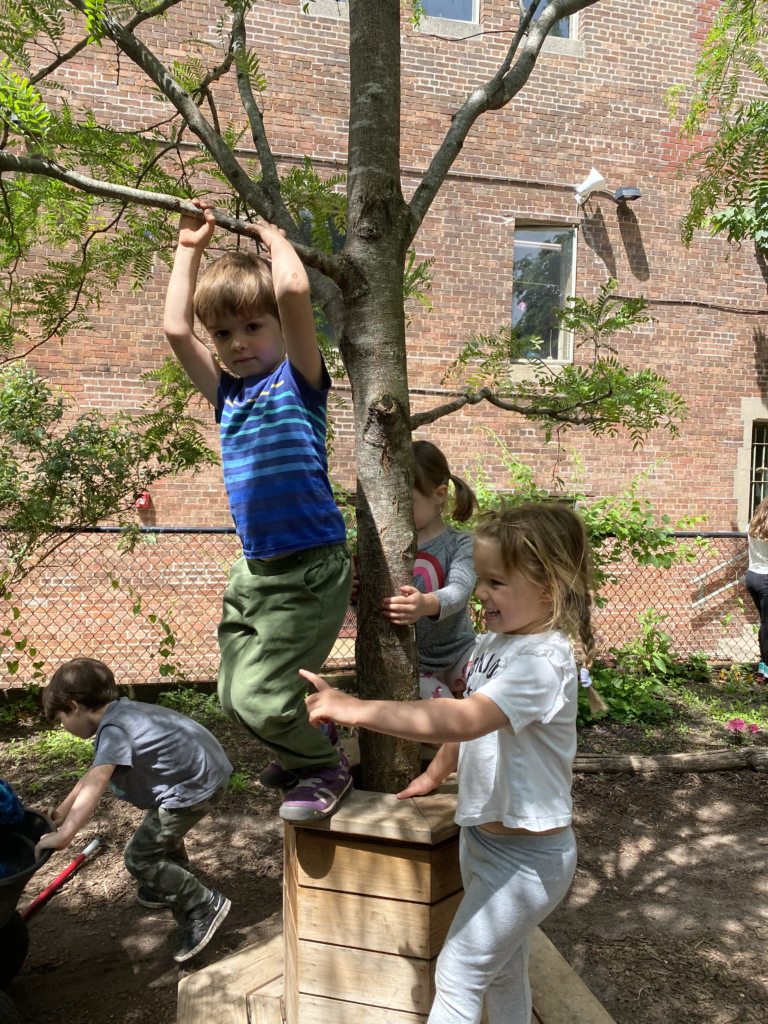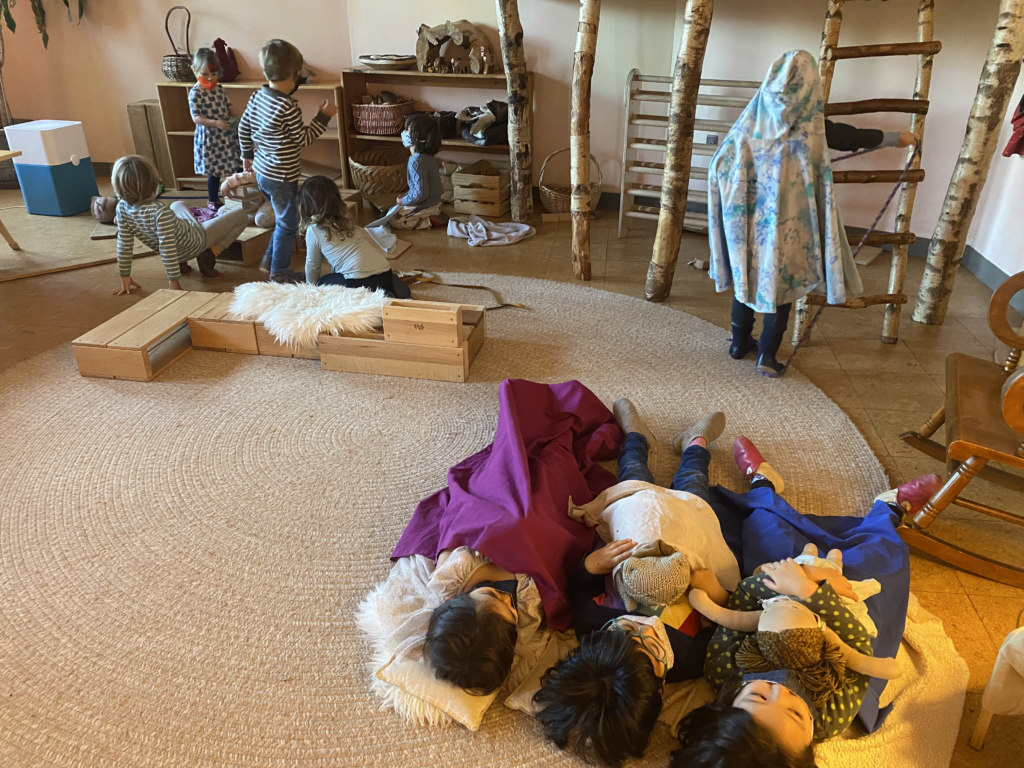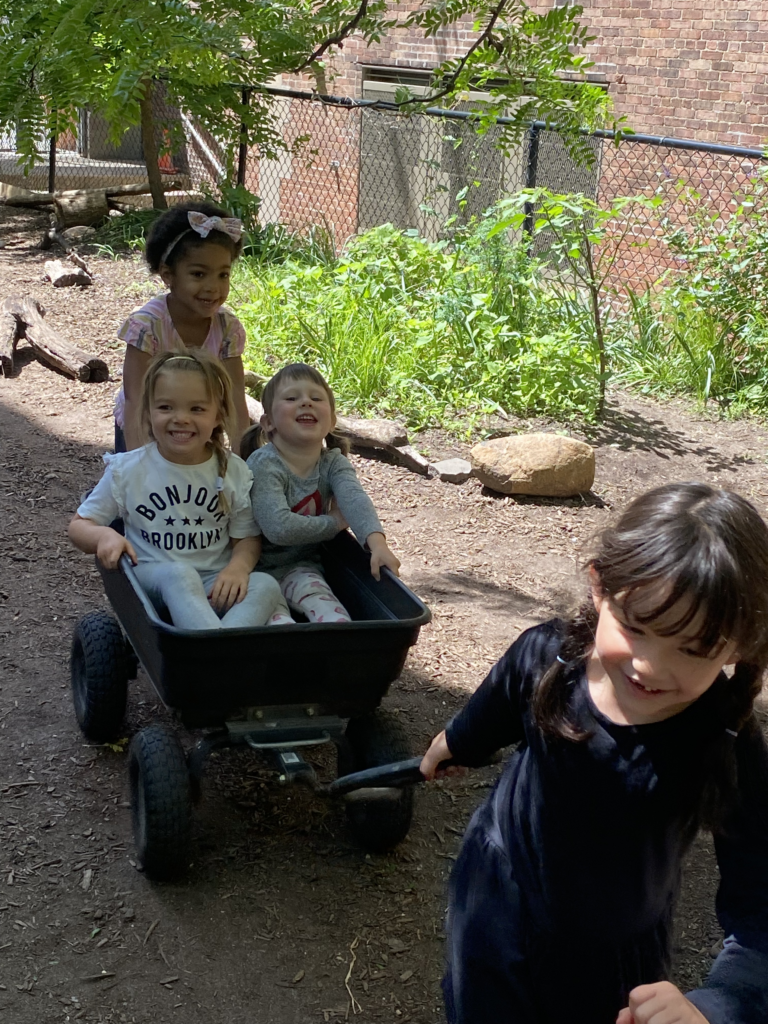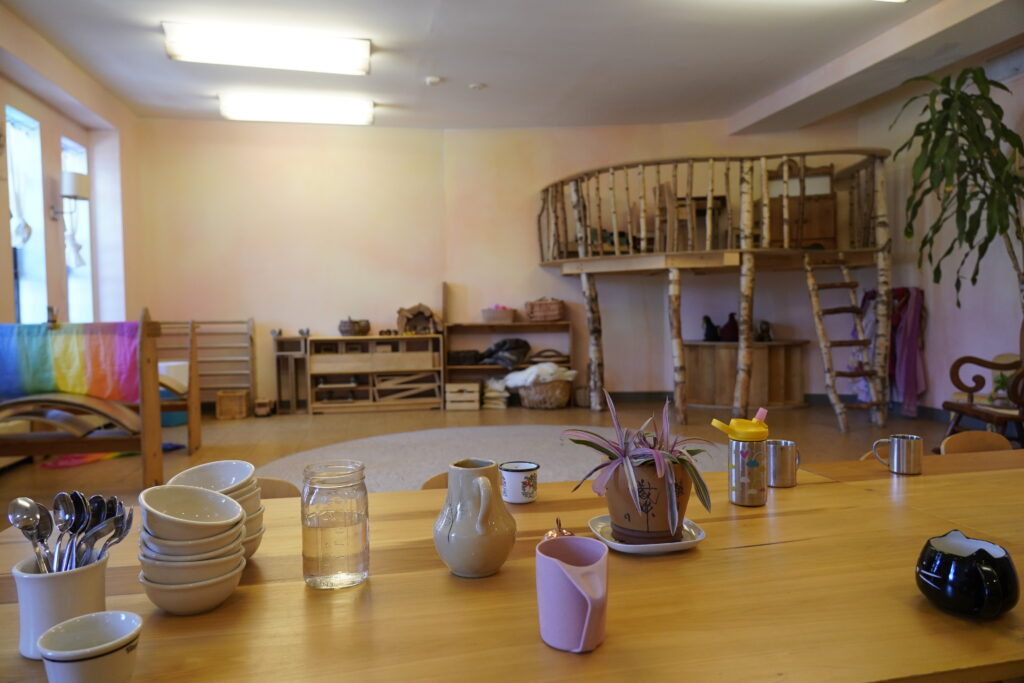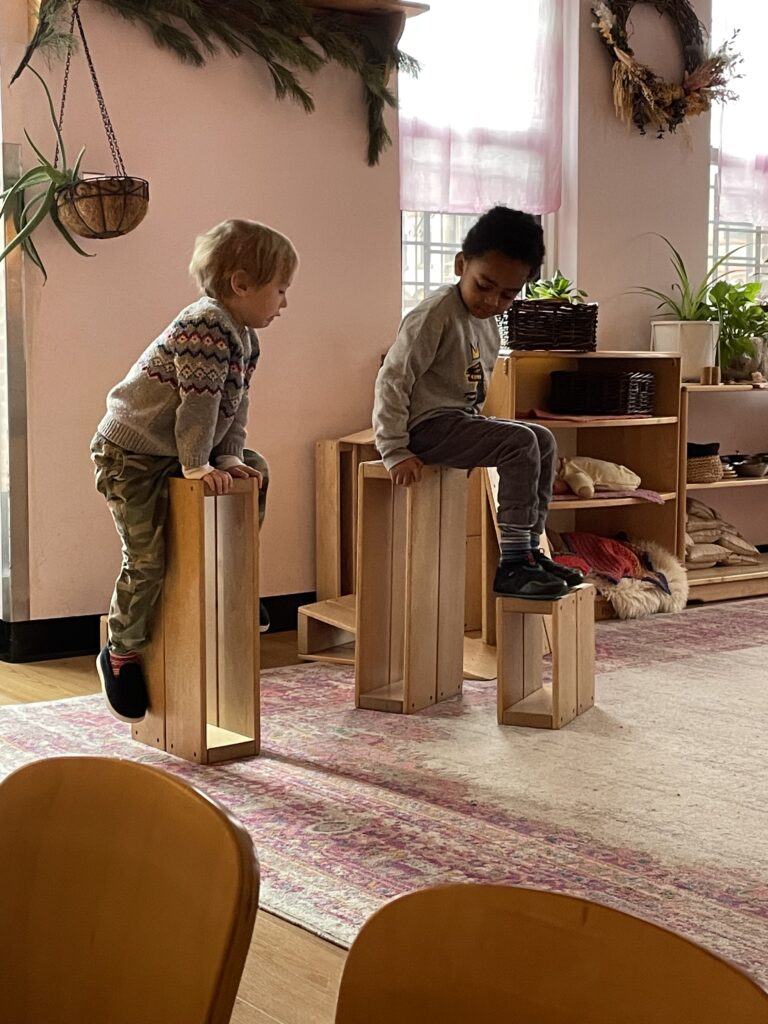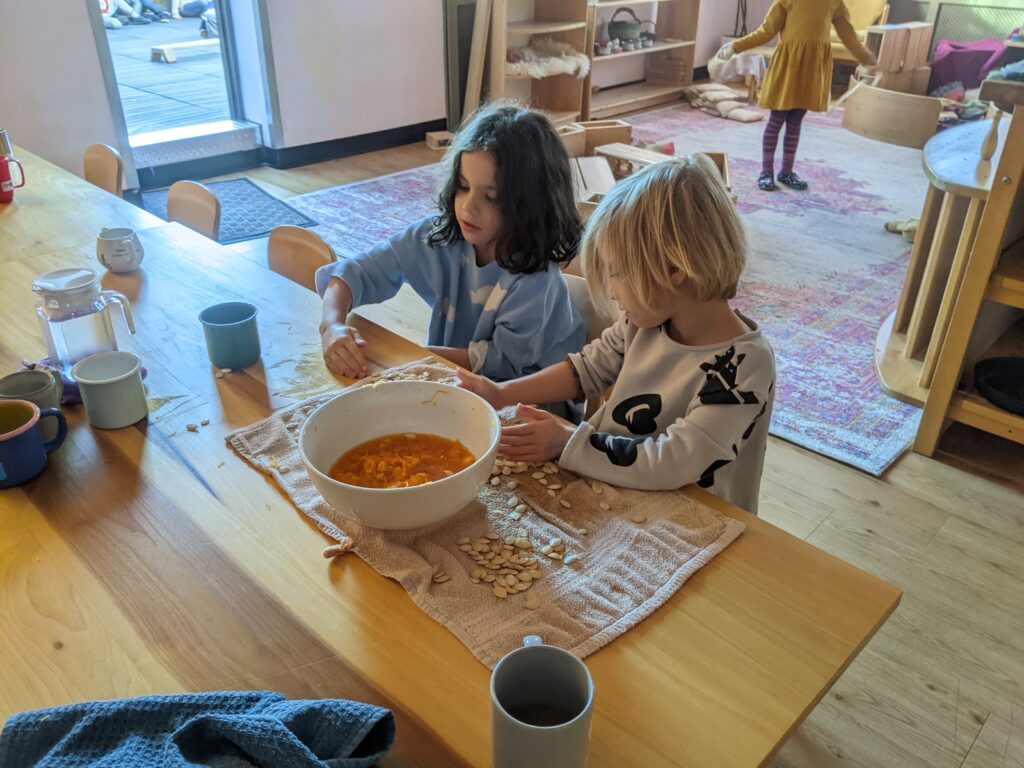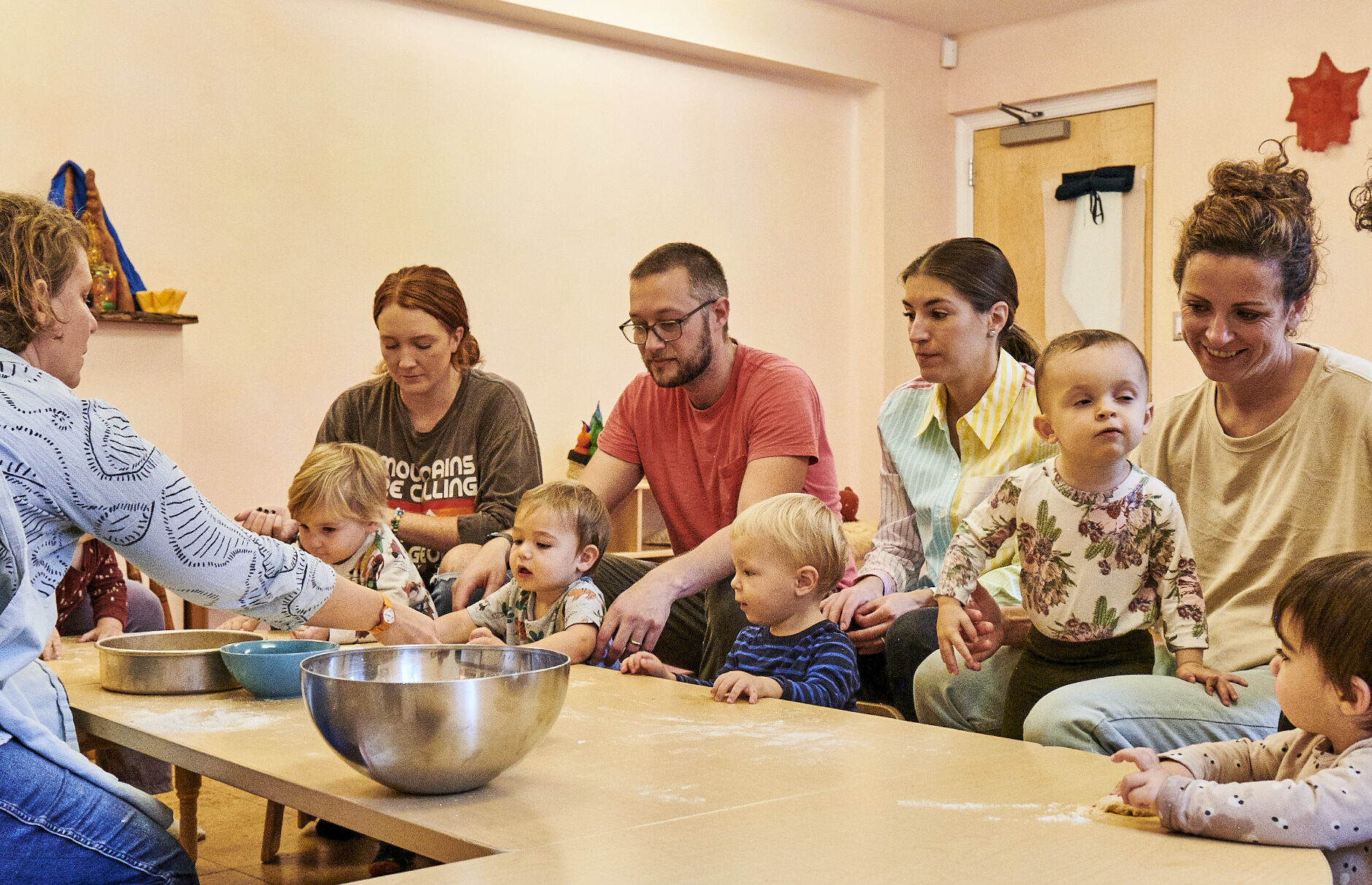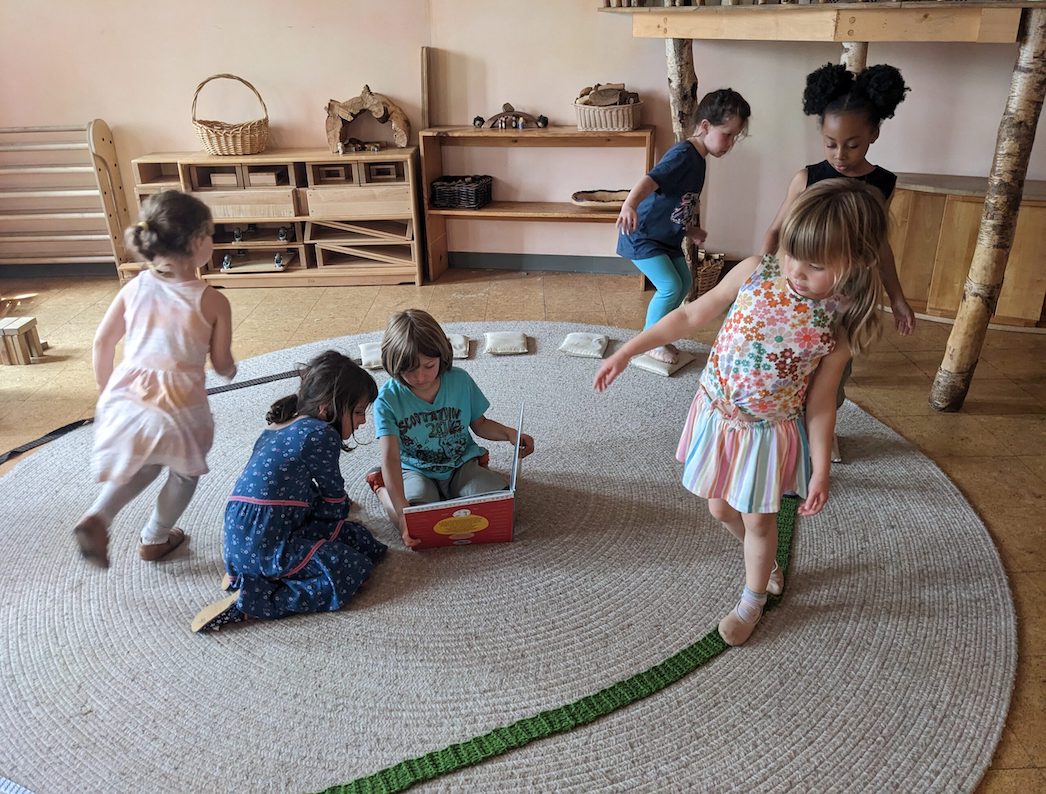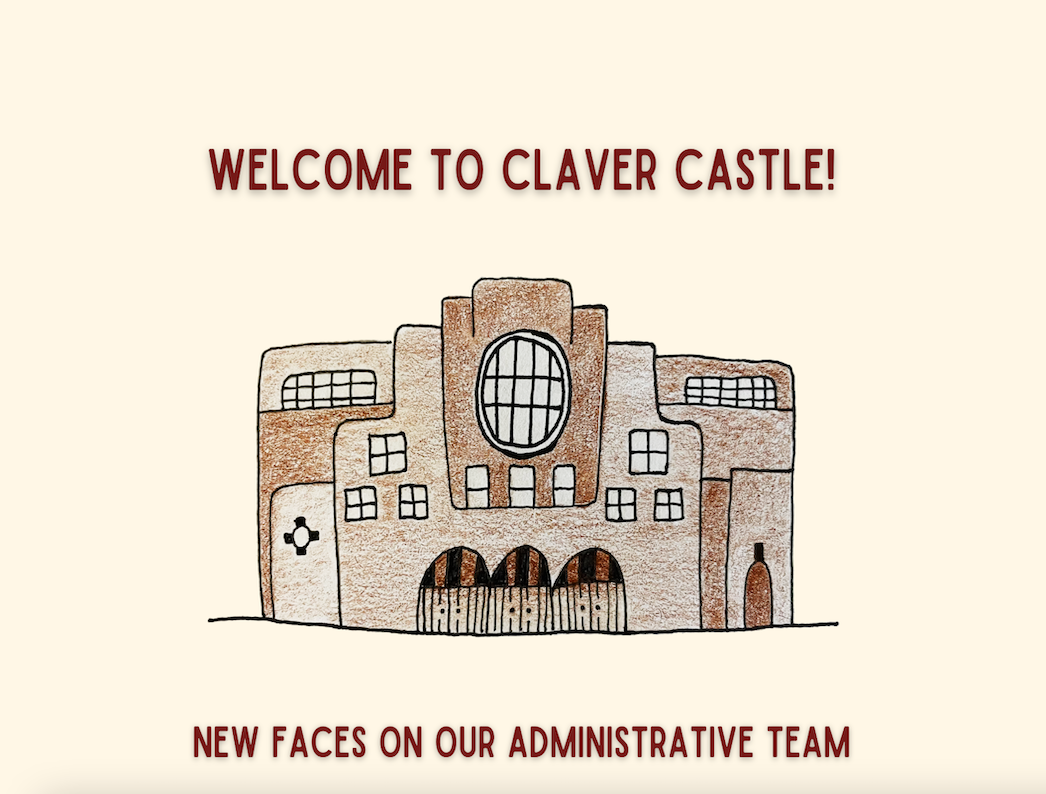What is Waldorf Kindergarten?
At the Brooklyn Waldorf School, our early childhood drop off program begins with children who turn 3 years old by the end of the calendar year. Children stay in the early childhood program, which includes nursery and mixed-age kindergarten, until they’re six or seven before moving into first grade.
Have you had the opportunity to spend time in a Waldorf Early Childhood classroom? Most adults haven’t.
It’s a joyfully inviting place, where learning is fostered through free play, practical work, connection with nature, and artistic activity. Creativity, imagination, kindness, and community building are encouraged and nourished through the curriculum. This article will give you a peek into the rhythm of our early childhood program.
What is ‘Free Play’?
If you walk around the second and third floors of Claver Castle around 9am and peer into our Early Childhood classrooms, you’ll find small students in cozy slippers engaging in something called Free Play. This simply means that play is not directly led by an adult. Children may be tinkering with wooden toys, transforming pieces of fabric into capes, engaging in artistic activities, or role playing whatever their imaginations might conjure. With the help of the children, the teachers begin preparing the day’s meal – soup and bread are staples – and the culinary aromas float through the building.
When students are given unstructured time without toys or gadgets designed for a specific activity, they find inventive things to do using the natural environment around them. This cultivates imagination and problem solving skills. This part of the day creates an atmosphere of freedom where the individuality of each child can develop.
The type of objects we incorporate into this time are often made of wood or other items found in nature and are ‘open-ended’. They have no singular obvious intended use. These toys, because they’re comprised of natural materials with different textures and heaviness, allow for sensory integration – “the processing, integration, and organisation of sensory information from the body and the environment” (from sensoryeducation.com).
Free play also allows children to practice cooperating and compromising with peers, attributes that grow throughout the grades and overflow into life outside of school. When there is conflict, Early Childhood teachers calmly redirect the energy. If necessary, students will take time to listen to each other and hear their classmates’ perspectives to resolve the issue through communication and empathy. Rudolf Steiner states, “If a child has been able in his play to give up his whole loving being to the world around him, he will be able, in the serious tasks of later life, to devote himself with confidence and power to the service of the world.”
What’s Next?
Before Circle, students clean up from the morning. Wooden blocks, cloths, crayons, and handmade dolls are all returned to their designated places. Children work together to quickly and quietly rearrange the room. This communal care of the classroom is an important part of the Early Childhood day to reinforce the home to school bridge – children who have a set of chores/responsibilities are shown to have higher self-esteem, are more self-sufficient, and are better able to deal with frustration and delayed gratification as they grow into young adults (https://www.aacap.org).
The rhythm of the day next moves to Circle. Circle is a journey of movement, verse, and song, typically centered around a seasonal theme or story. There are many things happening during Circle:
- Children learn to develop listening skills.
- The teacher is given an opportunity to observe the children’s gross and fine motor skills and support them in their individual development.
- Speech, singing, and coordination are developed through the songs, movements and verses.
- Community and relationship building (and fun!) are nurtured.
- Concepts about the natural world, including the seasons, animals, and flora, as well as cultural holidays and festivals and imaginative elements are introduced.
Rest & Snack
Finally it’s Rest Time. This is when the children recalibrate from the activity of the morning. It’s a short break, about 5-10 minutes long, but a necessary one. The teacher will often play music, introduce meditation techniques, or invite children to ‘check in’ with their bodies (“without moving, think about where your fingers are, relax your shoulders”, etc.) while they comfortably lounge on the carpeted floor.
In all Brooklyn Waldorf Early Childhood classrooms, there is a large wooden communal table for sharing meals together. When it is time for their first snack after resting, children will sit down at the table while the teacher may introduce games such as riddles or describe animals that the children guess after hearing clues. Children may share stories from their own lives or listen to the teacher tell a story about theirs. Additionally, this time is used for establishing and nourishing boundaries and expectations for eating and caring for each other in community (children serve each other snack, and wash their dishes and clean the table) as well as giving children practice with practical activity that encourages dexterity, coordination, and independence.
What Does the Rest of the Afternoon Look Like?
An important element of Waldorf education regardless of age is next – Outdoor Play. Giving children time in nature cultivates an innate interest in science that persists through the grades. It also helps students build imagination and curiosity and lessens stress. Children play outdoors in most types of weather (always prioritizing safety) – dressed appropriately in rain and snow gear as needed. They’re able to interact with nature in all seasons, building resilience and adaptability. If you’d like to investigate this concept further, scientist Temple Grandin discusses why kids should go outside in this CNN article.
Lastly, Early Childhood students gather for lunch before heading home. The meal usually consists of food made throughout the day by teachers and the children such as soup or bread that’s been infusing the classroom with yummy smells since early morning.
Main Elements of Waldorf Early Childhood Education
In sum, there are a few elements that define Waldorf Early Childhood classrooms:
- Mixed Age
- Most students spend 1-3 years in Early Childhood (otherwise known as Kindergarten) before moving into first grade. This creates mixed age classrooms, and bonds that grow beyond EC into the grades. Children will often have friends in the grade above and below them from this time. It also naturally builds mentorship and empathy, with the ‘Elderberries’ showing new children the ropes. Younger children have opportunities to learn and be nurtured by the older children in the class.
- Free Play
- Including indoor and outdoor play daily, using toys made from natural material and other objects found in nature.
- Home-like Environment
- Each Early Childhood classroom at Brooklyn Waldorf has elements of a home – soft lighting, a kitchen, comfy carpets, blankets, pillows, and chairs. Children have been known to ask, “Where does my teacher sleep?” because they’re under the impression that this is where they live.
- Connections with Nature
- The Early Childhood curriculum is designed to follow the natural rhythm of the seasons, with an emphasis on fostering children’s innate curiosity and connection with the natural world around them.
- Practical activities
- Sensory integration to prepare children for academic learning in the first grade
Conclusion
The creation of a stable daily rhythm that’s bountiful in movement, sensory experiences, and artistic expression is fundamental to our Early Childhood program. The Brooklyn Waldorf School emphasizes play-based education that’s based in the cognizance of child development in order to build a strong, holistic foundation for your child’s life. Are you interested in learning more? Additional information can be found on the Early Childhood page of our website. If you’d like to take a tour or speak to our Admissions Manager, visit us here.

